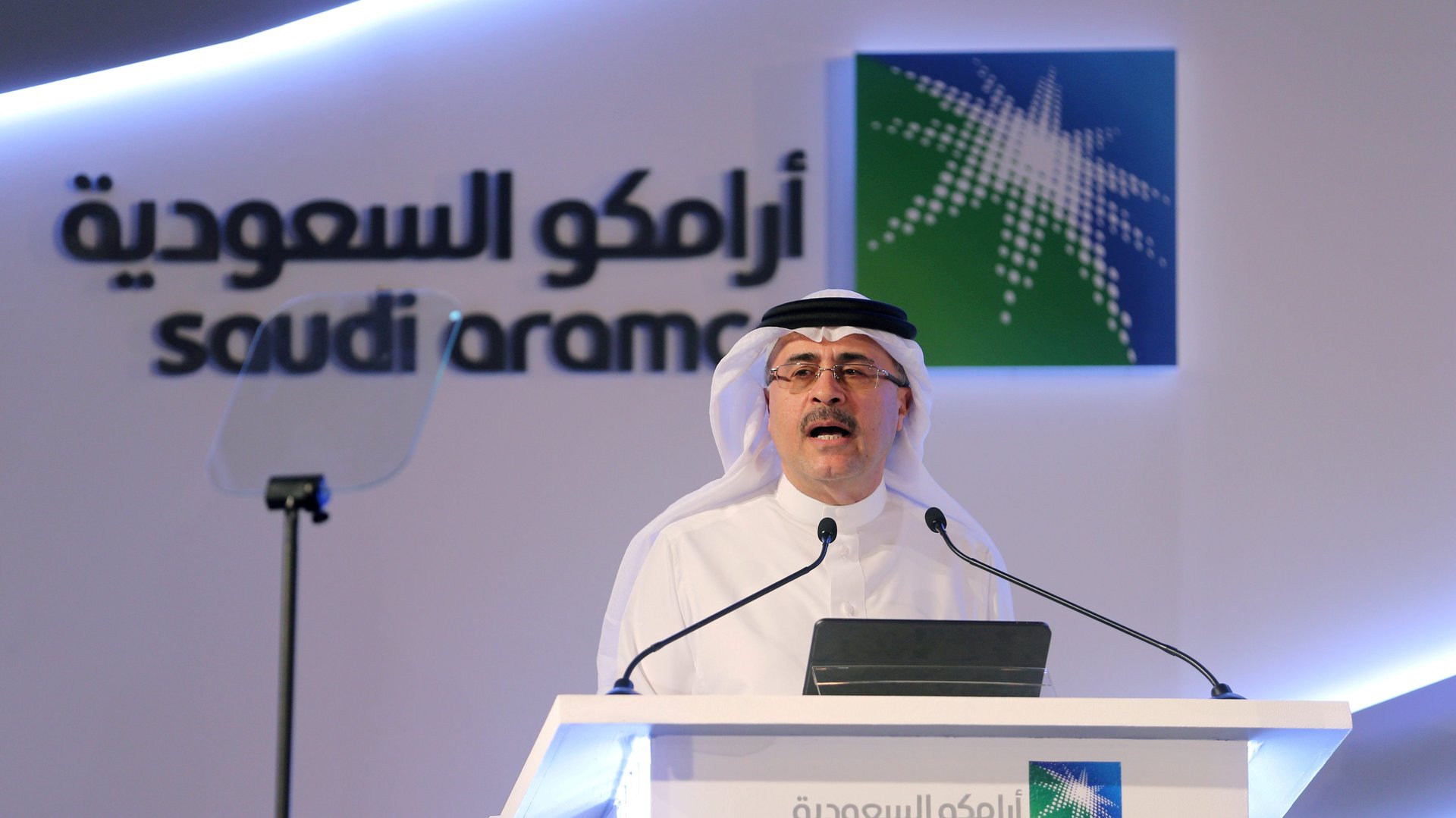Saudi Aramco has lost the title of world’s most profitable company
Saudi Aramco, the world’s largest oil exporter, is no longer the world’s most profitable company.


Saudi Aramco, the world’s largest oil exporter, is no longer the world’s most profitable company.
After a pandemic year that slashed fossil fuel prices—and drove up demand for consumer technology—that distinction now falls to Apple. The iPhone maker netted $57.4 billion in its 2020 fiscal year, while the oil giant recorded a (measly for Aramco) $49 billion profit.
Aramco’s annual profit dropped 44% in a topsy-turvy 2020 that rewired the global economy, briefly sent oil prices below $0, and sparked a record drop in worldwide carbon emissions. Apple, meanwhile, hardly registered a blip in its steady, high margins, as homebound consumers continued to buy up iPhones, iPads, and Macs. In fact, the company smashed revenue records in the holiday shopping season between October and December of 2020. In that quarter alone, the company made a $22.8 billion profit.
Note that Apple and Aramco’s fiscal years don’t line up perfectly. Aramco’s fiscal year aligns with the calendar, but Apple’s fiscal year runs from September to September. That means Apple’s FY 2020 profits include 2019’s holiday shopping season, but not its record-breaking 2020 holiday quarter. If you were to only look at the calendar year 2020, Apple’s lead over Aramco would be even bigger.
Saudi Aramco is committed to paying its dividend
Aramco still plans to pay out the $75 billion in dividends it promised investors at the start of the year, though it will likely have to take on more debt to do it.
The company will also cut capital expenditures to $35 billion—down from its previously projected range of $40 billion to $45 billion—in a sign that Aramco’s expectations for long-term oil prices have dimmed.
Oil demand is rebounding, though
Aramco could regain its position as the world’s greatest money-maker this year. Demand for oil is rebounding as vaccine rollouts gain traction and the economy returns to something resembling normalcy. Analyst expectations for oil prices have ticked back up to pre-pandemic levels. Scientists are signaling that the world is missing its chance to rethink its energy habits and put itself on a different carbon emissions trajectory.
In the long run, Apple and its tech industry peers atop the list of the world’s most profitable firms will leave Aramco far behind as the economy adapts to greener energy sources. The only question is how long Aramco and other oil producers will continue to squeeze a profit out of global inaction on climate change.